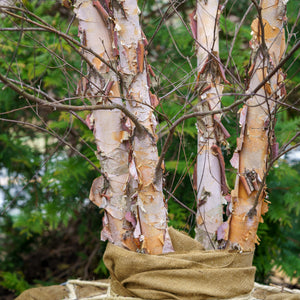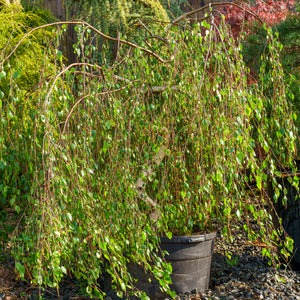The Birch Guide
Birch trees, belonging to the genus Betula, are known for their striking bark, graceful form, and adaptability to a wide range of environments. With bark that peels in papery layers, leaves that shimmer in the breeze, and a canopy that provides dappled shade, birches are a standout choice in both residential and naturalized landscapes. Whether you're planting for aesthetics, wildlife value, or to create a striking focal point, birch trees offer year-round beauty and charm.
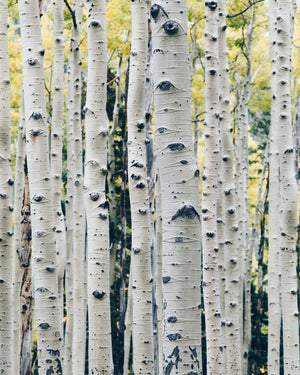
About
Birches are deciduous trees found across the Northern Hemisphere, with a natural range that includes Europe, Asia, and North America. Their most recognizable feature is their bark, which can vary from pure white (Betula jacquemontii) to salmon-pink (Betula nigra) to golden or silvery-gray. These trees are known for their elegant silhouette and delicate, toothed leaves that turn golden yellow in fall.
Popular varieties include Betula nigra 'Heritage', a fast-growing cultivar with exfoliating bark and good disease resistance; Betula papyrifera, or paper birch, which boasts brilliant white bark and high cold tolerance; and Betula populifolia 'Whitespire', prized for its narrow form and adaptability to urban conditions. Dwarf forms like Betula nigra 'Little King' (also known as 'Fox Valley') offer compact structure for smaller gardens.
Birch trees support biodiversity, providing habitat and food for birds, caterpillars, and pollinators. Their graceful form and ornamental bark make them suitable as specimens or in groupings to create light shade and seasonal interest.
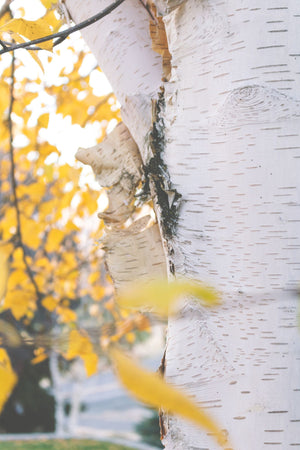
PLANTING
Birch trees thrive when planted in well-chosen locations and supported with thoughtful soil and watering practices:
- USDA Hardiness Zones: Most birch species grow well in Zones 3–9, depending on the cultivar.
- Soil: Prefer moist, well-drained, slightly acidic soils. Tolerate clay, loam, and sandy soils with adequate organic matter.
- Sunlight: Full sun to light shade. In hotter climates, provide afternoon shade to reduce stress and prevent borers.
- Watering: Keep soil consistently moist during establishment. Mature trees benefit from occasional deep watering during drought.
- Spacing: Depending on the species, plant birches 20 to 40 feet apart to accommodate their mature spread.
- Planting Time: Early spring or fall is ideal to reduce transplant shock and promote root establishment.
Begin by digging a hole two to three times wider than the root ball. Ensure the root flare sits slightly above soil level. Backfill with amended soil and water deeply. Apply mulch in a wide ring around the base to retain moisture and protect the roots.
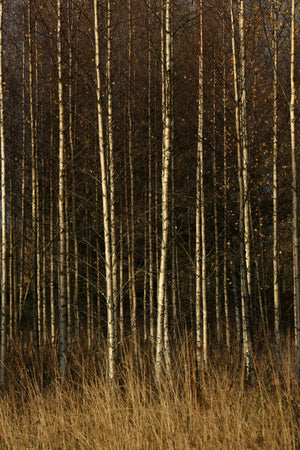
CARE
Birches require moderate care, with a few key practices to maintain their health and ornamental value:
- Watering: Young trees need regular moisture, especially during dry spells. Mature trees benefit from deep watering every few weeks in drought.
- Fertilizing: Apply a slow-release, balanced fertilizer in early spring. Avoid high-nitrogen formulas which can lead to weak, leggy growth.
- Pruning: Prune in late fall or winter when sap flow is low. Remove dead or damaged wood and thin interior branches to improve airflow.
- Pests & Diseases: Watch for bronze birch borer, aphids, and leaf miners. Planting in cool, moist conditions and avoiding drought stress helps reduce pest pressure.
- Mulching: Maintain a 2–4 inch mulch layer, keeping it a few inches away from the trunk to prevent rot and attract beneficial soil life.
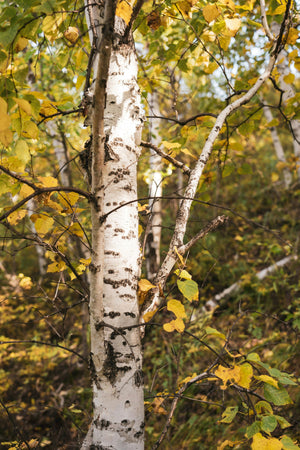
HOW TO USE
Birch trees shine in a variety of landscape applications, thanks to their elegant form and textured bark:
- Specimen Trees: Create a focal point with striking varieties like Betula jacquemontii, whose bright white bark contrasts beautifully with dark evergreens.
- Naturalized Plantings: Group several trees together for a woodland look, especially near water features or in damp meadows.
- Privacy Screens: Use upright forms like Betula platyphylla 'Dakota Pinnacle' for seasonal screening with added visual interest.
- Urban and Suburban Landscapes: Compact selections like Betula nigra 'Little King' suit small yards and foundation plantings.
- Wildlife Gardens: Birch trees support over 400 species of insects and are a valuable host plant for native caterpillars and nesting birds.
Pair birches with shade-tolerant perennials like ferns, hostas, pulmonaria, or spring ephemerals. Their filtered canopy provides the perfect conditions for understory interest.
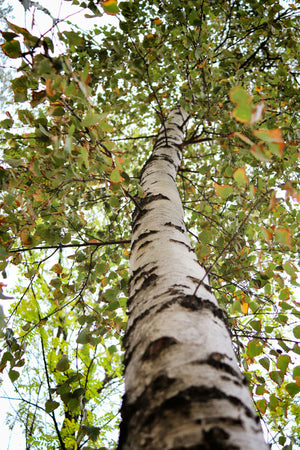
Common Questions
- What does a birch tree look like? Birch trees typically have peeling bark in white, pink, or gray shades, with triangular or oval leaves that flutter in the wind and turn yellow in fall.
- Where do birch trees grow? Birches thrive in temperate regions with cool, moist soil, and are native across North America, Europe, and Asia.
- How long do birch trees live? Lifespan varies by species. River birch may live 30–40 years, while paper birch can live 60–100 years in ideal conditions.
- How fast do birch trees grow? Most birches grow 1 to 2 feet per year, with river birch and white birch among the fastest-growing.
- How to prune a birch tree? Prune only in late fall or winter to avoid sap bleeding. Remove crossing, dead, or diseased branches and thin lightly to maintain shape.
- How fast do river birch trees grow? River birch (Betula nigra) can grow up to 2 feet per year in ideal conditions, making it one of the fastest-growing birches.
- How tall do birch trees get? Mature birch trees typically range from 30 to 70 feet tall, depending on species and site conditions.
Conclusion
Birch trees are elegant, fast-growing, and offer year-round beauty with their peeling bark and vibrant foliage. Whether you're seeking a striking focal point for your landscape or creating a naturalized woodland setting, birch trees deliver visual impact and ecological value. With proper planting and care, they will reward you with decades of shade, color, and wildlife interest.
The Birch Collection
Sold Out
Sold Out


